1. SE
1.1. HEPATITIS
1.2. AGRANULOCYTOSIS
1.3. VASCULITIS
2. general approach
3. goal
3.1. relife symtoms
4. goal
4.1. symptomatic relife
5. symtoms
5.1. pretibial mexodema
5.2. exophthalus
5.2.1. pathognomonic
6. graves
6.1. AUTOIMMUNE
7. step1:
7.1. cues
7.1.1. 28y-F
7.1.2. ANXIOUS about the exam
7.1.3. functional impact noticed
7.1.4. difficulty concentrate
7.1.5. nervous at work
7.1.6. prespire
7.1.7. tremor
7.1.8. palpitation
7.1.8.1. at night
7.1.9. weight loss- last 2 m
7.1.10. sleep disturbance
7.2. words
7.2.1. FRACP: FOLLOW OF ROYAL AUSTRALIAN COLLEGE OF PHYSICIAN
7.2.2. RIGISTRAR:
8. step2: problem formulation
8.1. 28y medical registrar feeling anxous and difficult to concentrate in her work. she has perspiration and slight tremor with weight loss jn last two month. palpitation an sleep disturbance for a couple of weeks.
9. step3: hypothesis generation
9.1. PALPITATION
9.1.1. ANEMIA
9.1.2. SYMPATHETIC
9.1.3. THYROID HORMONES SECRETION
9.1.3.1. STRESS
9.2. TREMOR
9.2.1. POSTURAL WITH ANXIETY
9.3. overactive thyroid
9.4. triggered anxiety
9.4.1. exam
9.5. psychatric case
9.5.1. inability to cope with stress
9.6. why it is not stress?
9.7. stress+endocrine problem
9.8. stress responce
9.8.1. PHA axis
9.8.1.1. high metabolic rate
9.8.1.1.1. weight loss
9.9. adrenal tumor
9.9.1. pheochromocytoma
9.10. anxiety
9.10.1. stressor
9.11. hyperpitutarism
9.12. autoimmune
9.12.1. gravis disease
9.13. vitamin B1 deficence
9.13.1. beri-beri
10. step4: hypothesis organization
10.1. endocrine
10.2. psychaietry
11. step5: OBJ
11.1. stress: effect on endocrine system
11.2. THYROID PHYSIOLOGIC FUNCTION
11.2.1. HYPERTHYROIDISM
11.3. CRITERIA OF ANXIETY DIGNOSIS
11.4. PHYOCHROMCYTOMA
11.4.1. TRIAD
11.4.2. PATHOPHYSIOLOGY
12. step6: reporting
12.1. thyroid physiology
12.1.1. TRH
12.1.1.1. ACTIVATE pit
12.1.2. TSH
12.1.2.1. activate thyroid
12.1.2.1.1. t4 and t3
12.2. HYPERTYROIDISM
12.2.1. DIFFRENT ENTITIIES
12.2.1.1. GRAVES
12.2.1.1.1. AUTOIMMUNE
12.2.1.1.2. TSI do the function of TSH
12.2.1.1.3. prolonged activation
12.2.1.1.4. symptoms
12.2.1.1.5. POPULATION
12.2.1.2. POSTPARTUM
12.2.1.3. AMIODARON INDUCED THYROTOXICOSIS
12.2.1.4. THYROTOXICOSIS
12.2.1.4.1. HIGH serum of thyroid hormone regardless of etiology
12.3. GENARILISED ANXITY DISORDER
12.3.1. criteria
12.3.1.1. WORRING
12.3.1.2. RESLESS
12.3.1.3. SLEEP PROBLEM
12.3.2. MEDICATION CONTROL
12.4. PHEOCHROMOCTOMA
12.4.1. TUMOR OF CHROMAFFIN CELL
12.4.2. CRITERIA
12.4.2.1. paroxismal hypertention
12.4.2.2. diaphoresis
12.4.2.3. headaches
12.4.2.4. PALPITATION
13. STEP7: INQURY PLAN
13.1. HISTORY
13.1.1. SLEEP AFFECTED
13.1.2. TREMOR
13.1.3. ANXOUIS
13.1.4. morning palpitation
13.1.5. breathless
13.1.6. 3kg in last month
13.1.7. late mensis
13.1.8. PRESPIRE
13.1.9. exophthalmus
13.2. past history
13.2.1. asthma
13.3. personal
13.3.1. heavy workload
13.3.2. no smoke
13.3.3. OCCASIONAL DRINKING
13.4. FAMILY
13.4.1. grandma has thyroid problem
13.5. physical exam
13.5.1. VITALS AND APPEARANCE
13.5.1.1. RR110
13.5.1.2. 140\50
13.5.1.3. 37C
13.5.1.4. ANXIUS
13.5.1.5. 64KG, 170
13.5.1.6. sweaty and tremor
13.5.1.7. ENLARGED THYROID
13.5.2. lid lag
13.5.3. exophthalmus
13.5.4. proximal muscle waekness
13.5.5. hyperreflexia
13.5.6. palbable lymphnodes in neck
13.6. INVESTIGATION
13.6.1. THYROID SCAN
13.6.1.1. HIGH UPTAKE 20%
13.6.2. cbc
13.6.3. CHEMICALS AND ELCTROLYTES
13.6.4. TH
14. STEP8: DIGNOSTIC DESICION
14.1. graves disease
15. OBJ
15.1. MANAGMENT OF GRAVES DISEASE
15.2. IS IT NORMAL TO HAVE AUTOANTIBODY TO TSHR IN NORMAL INDIVISUAL?
16. Step 10: Management
16.1. goal
16.1.1. relife symtoms
16.1.1.1. BB
16.1.1.1.1. AT START
16.1.2. DECREASE THYROTOXICOSIS
16.1.2.1. THYONAMIDE
16.1.2.1.1. INHIBIT tpo
16.1.2.1.2. METHMIZOLE
16.1.2.1.3. PROPYLTHIOERACIL
16.1.2.1.4. SE
16.1.2.1.5. methods
16.1.2.2. RADIOIODINE
16.1.2.2.1. GIVEN PO
16.1.2.2.2. HYPOTHYRODISM
16.1.2.2.3. GIVE WITH LITHUM
16.1.2.3. THYRODECTOMY
16.1.2.3.1. REMOVE ALL OR PART
16.1.2.3.2. PARATHYROID IS NOT SPARED SOMTIMES
16.1.2.3.3. COMPLICATION
16.1.2.4. IODINE ADMINSRTATION
16.1.2.5. GLUCOCORTICOIDS AND CLOSTRAMINE
16.1.2.5.1. NOT FISRT LINE
16.1.2.6. TYROTOXIC CRISES
16.1.2.6.1. PRESPITATING FACTORS
16.1.2.6.2. CORRECTION
16.1.2.7. OPHTHALMOPATHY
16.1.2.7.1. MILD
16.1.2.7.2. SEVERE
16.1.2.8. PRETIBIAL MEXYDEMA
16.1.2.8.1. TOPICAL STRROID
16.1.3. DIFFRENT METHOD BUT NO SUPERIORITY
16.1.4. EDUCATION
16.1.4.1. ABOUT SE
16.1.4.1.1. HEPATITIS
17. STEP12
17.1. RESORCES
17.1.1. HARRISON
17.1.2. MEDSCAPE
17.1.3. UPTODATE
17.1.4. ENDOCRINEWEB .COM
17.1.5. CUMAR
17.1.6. DAVIDSON
17.1.7. GREENSFAN
